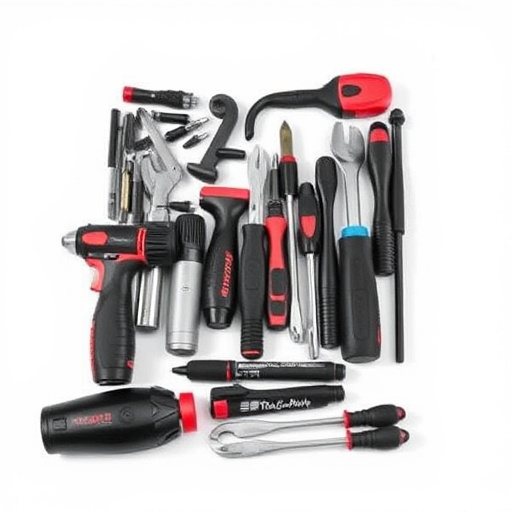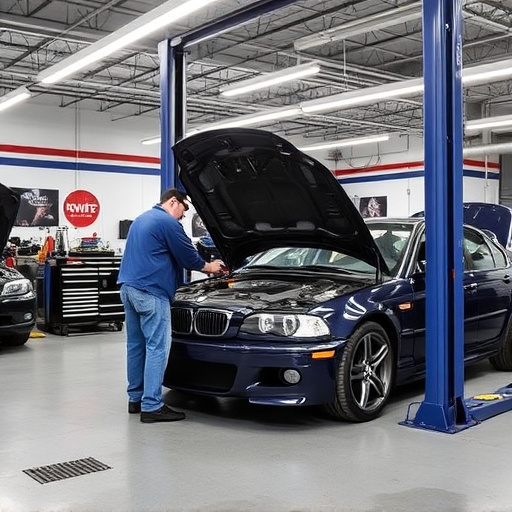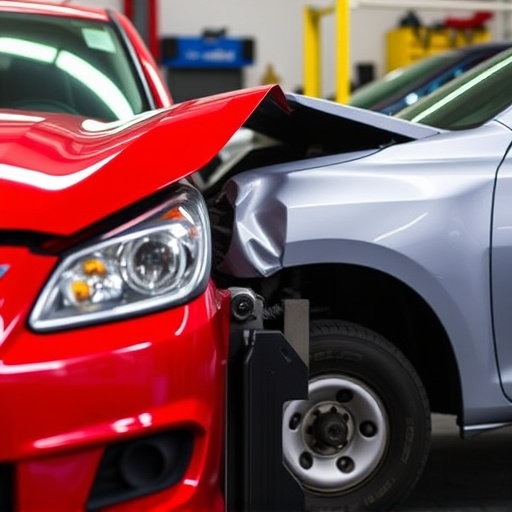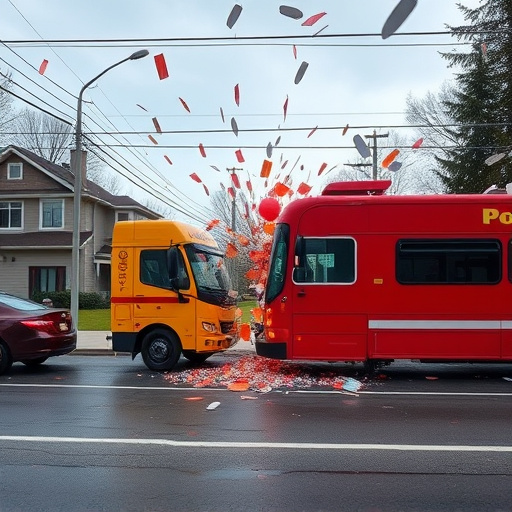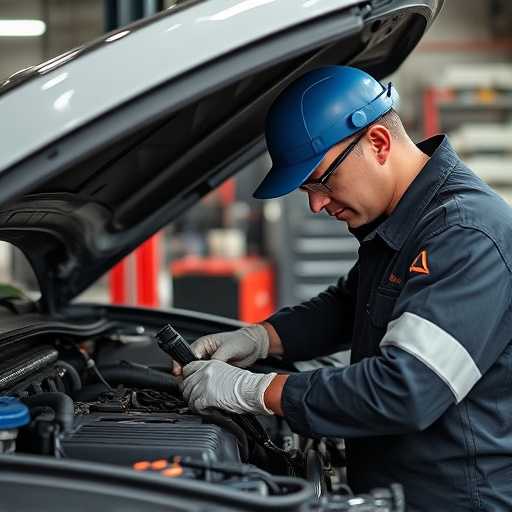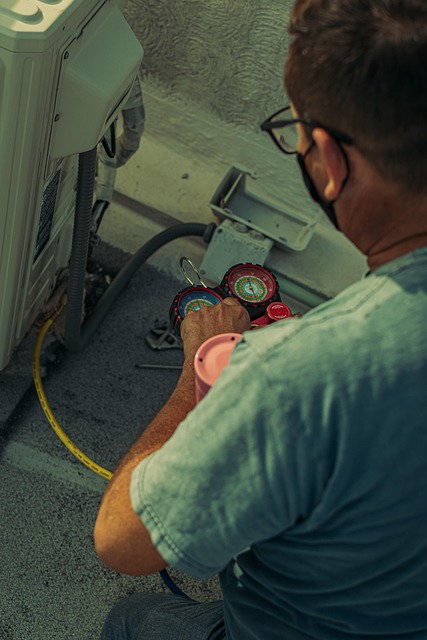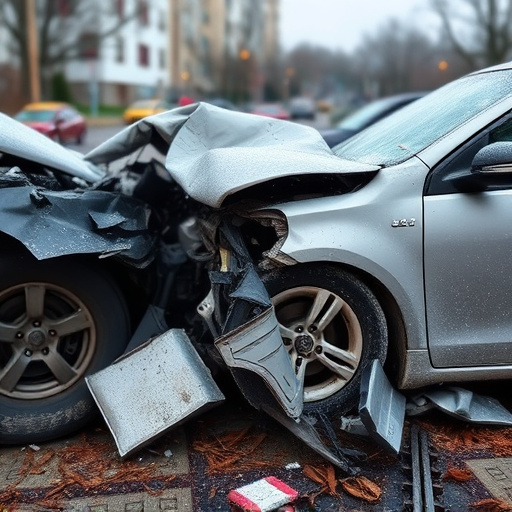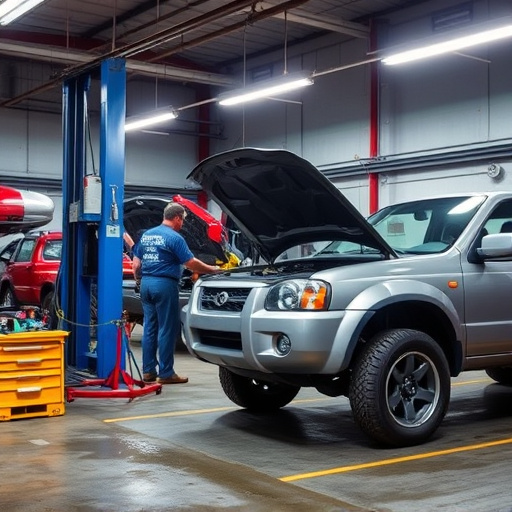Fleet collision services are crucial for minimizing vehicle collisions' impact on commercial fleets, ensuring safety and operational efficiency. Advanced technology and trained professionals offer swift solutions from minor repairs to complex structural fixes. Efficient damage assessment, strategic repair planning, and specialized auto body shops reduce downtime and costs. Prompt post-collision management includes thorough inspections and utilizing specialized facilities for cost-efficient and safe repairs, enhancing fleet longevity.
In today’s world, efficient fleet management is paramount, especially regarding collision services. This article offers advanced tips for leveraging fleet collision services to optimize operations. We’ll first explore a comprehensive overview of fleet collision services, clarifying their role and benefits. Subsequently, we’ll delve into best practices for damage assessment and repair strategies tailored for fleets. Finally, we’ll discuss maximizing safety through effective post-collision fleet management techniques.
- Understanding Fleet Collision Services: A Comprehensive Overview
- Efficient Damage Assessment and Repair Strategies for Fleets
- Maximizing Safety: Best Practices for Post-Collision Fleet Management
Understanding Fleet Collision Services: A Comprehensive Overview

Fleet collision services play a pivotal role in managing and mitigating damage to commercial vehicles, ensuring they remain operational and safe on the road. These services are designed to swiftly address collisions involving multiple vehicles within a fleet, streamlining the repair process and minimizing disruption to daily operations. By specializing in the unique needs of fleets, these services offer comprehensive solutions, including efficient dent repair, fender repair, and autobody repairs tailored to various vehicle types and makes.
Understanding fleet collision services involves recognizing their ability to provide specialized care for large vehicle assemblages. They employ advanced equipment and a team of trained professionals who can handle complex repairs, from minor cosmetic damages like dents and scratches to more severe structural Autobody repairs. This expertise is crucial in maintaining the safety and efficiency of commercial fleets, ensuring they meet regulatory standards while reducing downtime and operational costs.
Efficient Damage Assessment and Repair Strategies for Fleets
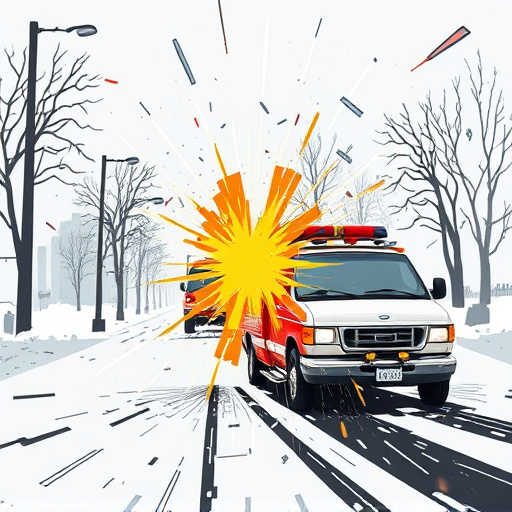
Efficient Damage Assessment and Repair Strategies for Fleets
When it comes to managing a fleet, efficient damage assessment and timely repairs are paramount to minimizing downtime and maximizing operational efficiency. The first step involves a thorough inspection of each vehicle involved in a collision, utilizing advanced technology such as drones or 3D scanning to capture detailed images and measurements. This comprehensive data allows for precise identification of damages, including hidden issues that might go unnoticed during a visual inspection. By leveraging fleet collision services, businesses can ensure that only authorized auto repair shops and auto body shops with specialized equipment and trained technicians handle the repairs.
Once damage assessments are complete, prioritizing repairs based on severity and vehicle usage is crucial. For example, immediate attention should be given to safety-critical components like brakes and tires, while less urgent but still important parts such as a bumper repair can be scheduled accordingly. This strategic approach not only ensures that fleet vehicles are safe to operate but also optimizes the use of resources, reducing unnecessary costs associated with auto body shop visits or repairs that might not significantly impact vehicle functionality.
Maximizing Safety: Best Practices for Post-Collision Fleet Management

In the immediate aftermath of a collision, efficient fleet management practices can significantly enhance safety and minimize disruptions. The first step is to ensure that all vehicles involved are thoroughly inspected for damage, especially critical components like brakes, tires, and suspension systems. Reputable fleet collision services emphasize comprehensive assessments to prevent any overlooked issues that could compromise safety during subsequent operations.
Implementing best practices for post-collision management includes prioritizing the use of specialized repair facilities equipped with state-of-the-art equipment, particularly for handling intricate vehicle bodywork repairs. Services like paintless dent repair offer not only cost-efficiency but also preserve the aesthetics and resale value of vehicles, especially luxury vehicle repair cases. Promptly addressing collision-related damages not only guarantees safer operations but also contributes to maintaining a fleet’s overall efficiency and longevity.
Fleet collision services play a pivotal role in minimizing downtime and maximizing operational efficiency. By understanding the intricacies of these services, implementing efficient damage assessment and repair strategies, and adopting best practices for post-collision management, fleet operators can significantly enhance safety and reduce costs. Embracing advanced tips outlined in this article equips professionals with the knowledge to navigate collision scenarios effectively, ensuring their fleets remain reliable and secure.




